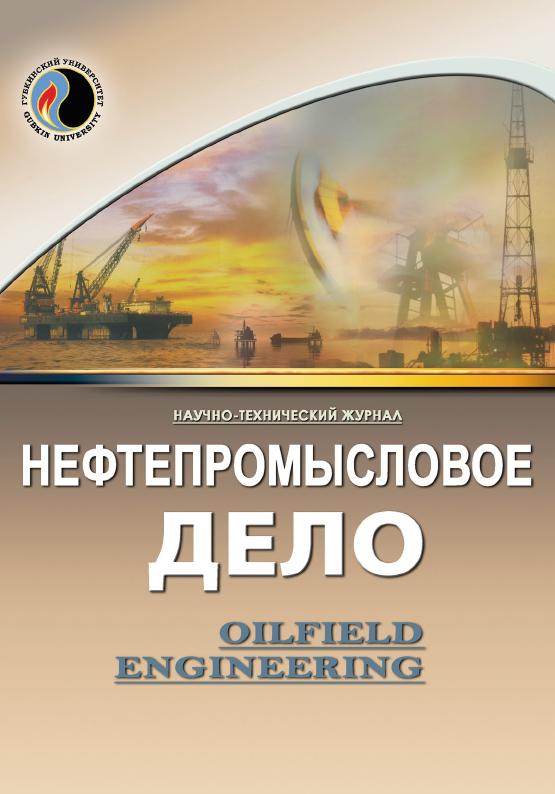Description of approaches to building a PVT-model for the following development of an integrated model
UDC: 622.276.43
DOI: -
Authors:
KASHAPOV RENAL R. 1,2
1,2,
KILDYUSHOV ARTUR A. 1,2
1,2,
GANIEV TIMUR I. 1,2
1,2,
YARMUKHAMETOV ILYAS N. 1,2
1,2
1 Almetyevsk State Oil Institute, Almetyevsk, Russia
2 Modeling Center, Center for Technological Development of PJSC "Tatneft"
Keywords: integrated model, integrated modeling, reservoir model, surface network model, well model, PVT-model
Annotation:
The article describes the stage of building a PVT-model, required for building an integrated model of a field. The process of PVT-model building is described step by step, methods of the model adaptation and parameters, by means of which convergence of the model data and results of laboratory studies of deep samples was achieved, are described. The process of creating pseudo-components in the range from C7 to C16+ is described to improve the consistency of the results of modeling and actual studies. The obtained values of viscosity, oil density, saturation pressure, volume factor and gas solubility achieved during PVT-modeling are compared with the averaged values of the deep samples indicators. Two PVT-models based on the results of deep samples study, taken during the first and fourth stages of a field development are compared. According to the results of the comparison, the conclusions are made that in future when building models of wells and surface networks it is necessary to use the PVT-model built on the basis of deep samples selected at the late stage of development.
Bibliography:
1. Integrirovannoe modelirovanie – instrument povysheniya kachestva proektnykh resheniy dlya razrabotki neftyanykh otorochek mnogoplastovykh neftegazokondensatnykh mestorozhdeniy / R.T. Apasov, I.L. Chameev, A.I. Varavva [i dr.] // Neft. khoz-vo. – 2018. – № 12. – S. 46–49.
2. Prakticheskaya realizatsiya kontseptsii integrirovannogo proektirovaniya dlya shel’fovogo aktiva AO "Zarubezhneft’" / I.S. Afanas’eva, G.D. Fedorchenko, A.A. Kozhemyakin, V.A. Smyslov // Neft. khoz-vo. – 2016. – № 8. – S. 94–97.
3. Nnochiri M., Kazeem A. Lawal. How Variable Fluid PVT Model Affects the Performance of an Integrated Production System // SPE EUROPEC/EAGE Annual Conference and Exhibition, Barcelona, Spain, June 2010. – DOI: https://doi.org/10.2118/130881-MS
4. Amerkhanov I.I., Kovalev K.A. Izmenenie fiziko-khimicheskikh svoystv plastovoy nefti v protsesse razrabotki Romashkinskogo mestorozhdeniya // Sb. nauch. tr. TatNIPIneft’. – M., 2010. – Vyp. LXXVIII. – S. 135–141.
5. Chueh P., Prausnitz J. Vapor-Liquid Equilibria at High Pressures: Calculation of Partial Molar Volumes in Nonpolar Liquid Mixtures // American Institute of Chemical Engineers J. – 1967. – Vol. 13(6). – P. 1099.
6. Peneloux A., Rauzy E., Freze R. A consistent correction for Redlich-Kwong-Soave volumes // Fluid Phase Equilibria. – 1982. – Vol. 8. – P. 7.
7. Pedersen K.S., Milter J., Sorensen H. Cubic Equations of State Applied to HT/HP and Highly Aromatic Fluids (SPE 77385) // SPE J. – 2002. – Vol. 9.
8. Lohrenz J., Bray B.G., Clark C. R. Calculating Viscosities of Reservoir Fluids from Their Compositions // J. of Petroleum Technology. – 1964. – Vol. 16(10). – P. 1171–1176. – DOI: 10.2118/915-pa
9. Primenenie integrirovannogo modelirovaniya v neftegazovoy otrasli / E.V. Filippov, G.N. Chumakov, I.N. Ponomareva, D.A. Martyushev // Nedropol’zovanie XXI vek. – 2020. – T. 20, № 4. – S. 386–400.
10. Tsifrovoe integrirovannoe modelirovanie v protsesse upravleniya zavodneniem / K.I. Povyshev, R.M. Valiev, M.G. Rechkin, R.D. Khamidullin // PRONEFT’’. Professional’no o nefti. – 2017. – № 4. – S. 44–47.

